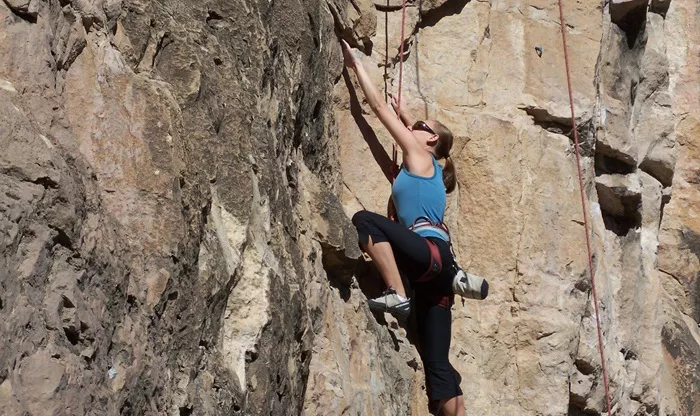Indoor rock climbing is an exhilarating sport that combines physical strength, mental focus, and strategic thinking. As a popular activity in climbing gyms worldwide, it offers climbers of all levels a safe environment to develop their skills and push their limits. This article will explore the fundamental techniques, essential equipment, and training methods that define indoor rock climbing.
Understanding Indoor Rock Climbing
Indoor rock climbing simulates outdoor climbing experiences within a controlled environment. Climbing gyms feature artificial walls with various holds and routes, catering to different skill levels. The walls can vary in steepness, from vertical to overhanging, and are often equipped with safety features like padded floors and harness systems.
Benefits of Indoor Rock Climbing
Indoor rock climbing provides numerous benefits:
Physical Fitness: It enhances strength, flexibility, and endurance.
Mental Challenge: Climbers must solve problems and strategize their movements.
Social Interaction: Climbing fosters a sense of community among enthusiasts.
Skill Development: It allows for safe practice of techniques before tackling outdoor climbs.
Essential Equipment for Indoor Climbing
Before embarking on an indoor climbing adventure, climbers must be familiar with the necessary equipment. Here’s a breakdown of the essential gear:
Climbing Shoes
Climbing shoes are specifically designed to provide grip and support. They feature a snug fit and rubber soles that allow climbers to feel the holds beneath their feet. When choosing climbing shoes, consider:
Fit: Shoes should be tight but not painful.
Type: Different shoes are designed for various climbing styles (e.g., bouldering vs. sport climbing).
Rubber Quality: A softer rubber provides better grip but may wear out faster.
Harness
A harness is crucial for safety during climbs. It secures the climber to the rope and distributes weight evenly. When selecting a harness, look for:
Comfort: Padding is essential for prolonged use.
Adjustability: A good harness should fit snugly around the waist and legs.
Weight Capacity: Ensure it meets safety standards.
Chalk
Chalk is used to keep hands dry, improving grip on holds. Climbers typically use loose chalk or chalk balls that minimize mess.
Belay Device
A belay device is used by the climber’s partner to manage the rope’s tension while climbing. It allows for controlled descent in case of a fall.
Fundamental Techniques in Indoor Rock Climbing
Mastering basic techniques is essential for effective indoor climbing. Here are some key techniques every climber should learn:
Footwork
Good footwork is crucial in climbing as it allows climbers to conserve energy and maintain balance. Effective footwork techniques include:
Precise Placement: Place your foot carefully on holds to maximize stability.
Silent Footwork: Aim to place your feet quietly on holds as this indicates control.
Use of Edges: Utilize the inside and outside edges of your shoes for better grip.
Body Positioning
Maintaining proper body positioning helps distribute weight effectively. Key aspects include:
Hips Close to the Wall: Keeping your hips close reduces strain on your arms and fingers.
Straight Arms: Extend your arms when reaching for holds; this conserves energy.
Twisting Hips: On overhangs or steep walls, twist your hips into the wall to maintain balance.
Grip Techniques
Different holds require various grip techniques. Familiarize yourself with these common grips:
Crimp Grip: Use when holds are small; fingers are bent at the knuckles.
Open-Hand Grip: Use when holds are larger; fingers are extended.
Movement Techniques
Efficient movement is essential for conserving energy during climbs. Techniques include:
Flagging: Counterbalance by extending a leg away from the wall to maintain balance.
Drop Knee: Rotate your knee inward while stepping onto a foothold at hip level; this increases reach.
Mantle: Push down on a hold while bringing feet up; this is often used at ledges.
Training for Indoor Climbing
To improve climbing skills, regular training is essential. Here are some effective training methods:
Strength Training
Building overall strength enhances climbing performance. Focus on exercises that target:
Core Strength: Planks, leg raises, and Russian twists improve stability.
Upper Body Strength: Pull-ups, push-ups, and rows develop arm strength.
Leg Strength: Squats and lunges build powerful legs.
Technique Drills
Practicing specific techniques helps refine skills:
Footwork Drills: Perform easy climbs focusing solely on foot placements without using handholds.
Movement Drills: Practice moving fluidly between holds without hesitation.
Endurance Training
Endurance is vital for longer climbs. To build endurance:
ARC Training (Aerobic Restoration & Capillarity): Climb continuously at low intensity to build stamina.
Interval Training: Alternate between hard climbs and rest periods to enhance recovery speed.
Safety Considerations in Indoor Climbing
Safety should always be a priority in indoor climbing. Here are some critical safety practices:
Proper Use of Equipment
Ensure all equipment is in good condition before use. Regularly inspect harnesses, ropes, and belay devices for wear.
Communication with Your Partner
Establish clear communication signals with your belayer before starting your climb. Common commands include “On belay,” “Climbing,” and “Take.”
Awareness of Surroundings
Be mindful of other climbers in the gym. Maintain a safe distance when climbing or descending.
Conclusion
Indoor rock climbing is an exciting sport that challenges both physical abilities and mental acuity. By understanding essential techniques, utilizing proper equipment, and adhering to safety practices, climbers can enjoy this thrilling activity while continuously improving their skills. Whether you’re a beginner or an experienced climber, there’s always room for growth in this dynamic sport. Embrace the challenge, enjoy the community, and reach new heights!
Related topics:
- What Gear Do You Need for Indoor Rock Climbing
- Why Does Rock Climbing Require Muscular Endurance?
- Why Is Rock Climbing Illegal in Indiana?

